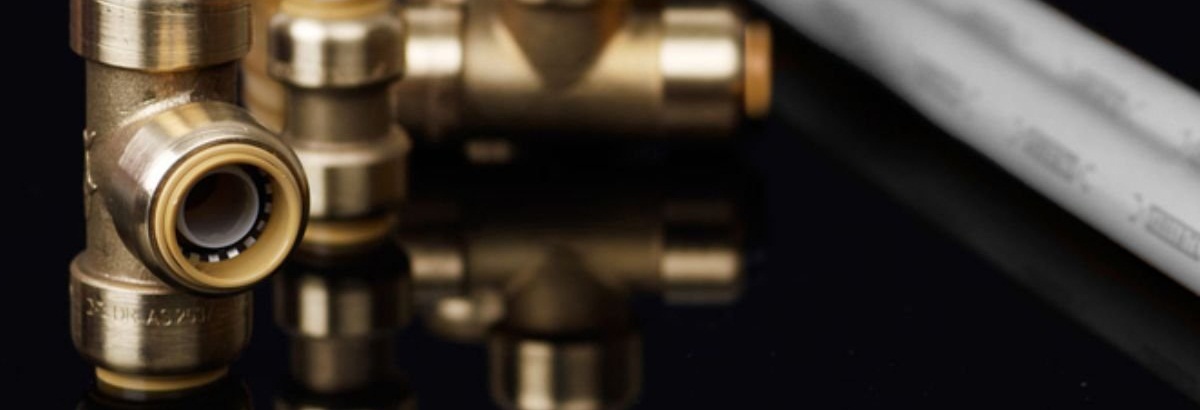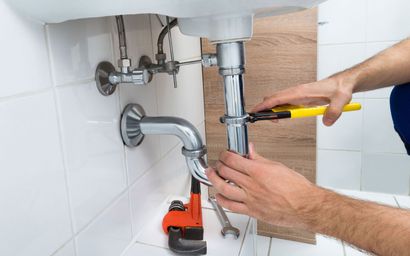The Core Parts of Your Home's Plumbing System
The Core Parts of Your Home's Plumbing System
Blog Article
What're your ideas concerning Understanding Your Home's Plumbing Anatomy?

Recognizing just how your home's plumbing system works is necessary for every homeowner. From delivering clean water for drinking, cooking, and showering to securely getting rid of wastewater, a well-maintained pipes system is essential for your household's health and wellness and convenience. In this thorough overview, we'll discover the intricate network that makes up your home's plumbing and offer suggestions on maintenance, upgrades, and managing common problems.
Introduction
Your home's pipes system is more than simply a network of pipelines; it's an intricate system that guarantees you have accessibility to tidy water and efficient wastewater removal. Knowing its components and just how they interact can aid you protect against pricey fixings and make sure every little thing runs efficiently.
Standard Elements of a Pipes System
Pipelines and Tubing
At the heart of your plumbing system are the pipelines and tubing that carry water throughout your home. These can be constructed from numerous products such as copper, PVC, or PEX, each with its benefits in regards to longevity and cost-effectiveness.
Components: Sinks, Toilets, Showers, and so on.
Components like sinks, bathrooms, showers, and bath tubs are where water is made use of in your house. Comprehending exactly how these fixtures attach to the pipes system assists in identifying problems and intending upgrades.
Shutoffs and Shut-off Factors
Valves manage the flow of water in your plumbing system. Shut-off shutoffs are critical throughout emergencies or when you require to make repair services, enabling you to isolate parts of the system without disrupting water circulation to the whole home.
Supply Of Water System
Main Water Line
The major water line links your home to the community water supply or an exclusive well. It's where water enters your home and is distributed to numerous components.
Water Meter and Pressure Regulator
The water meter procedures your water usage, while a stress regulatory authority makes sure that water streams at a safe stress throughout your home's plumbing system, preventing damages to pipes and components.
Cold Water vs. Warm water Lines
Understanding the difference between cold water lines, which supply water straight from the major, and hot water lines, which lug heated water from the hot water heater, aids in troubleshooting and preparing for upgrades.
Drain System
Drain Water Lines and Traps
Drain pipes bring wastewater away from sinks, showers, and commodes to the drain or septic system. Traps prevent sewage system gases from entering your home and likewise trap particles that could trigger obstructions.
Ventilation Pipes
Air flow pipes permit air into the water drainage system, avoiding suction that can slow down water drainage and trigger catches to empty. Appropriate air flow is vital for keeping the integrity of your pipes system.
Importance of Proper Drain
Making certain proper drain stops back-ups and water damage. Consistently cleaning drains and keeping traps can prevent expensive fixings and extend the life of your plumbing system.
Water Heating Unit
Kinds Of Hot Water Heater
Water heaters can be tankless or conventional tank-style. Tankless heating units warmth water on demand, while storage tanks save heated water for instant usage.
Updating Your Plumbing System
Reasons for Updating
Upgrading to water-efficient fixtures or replacing old pipelines can enhance water top quality, reduce water bills, and enhance the worth of your home.
Modern Pipes Technologies and Their Benefits
Explore innovations like clever leak detectors, water-saving toilets, and energy-efficient hot water heater that can conserve money and decrease ecological impact.
Expense Factors To Consider and ROI
Compute the upfront costs versus long-lasting cost savings when thinking about pipes upgrades. Several upgrades pay for themselves through reduced utility bills and less repairs.
Exactly How Water Heaters Link to the Pipes System
Recognizing just how water heaters connect to both the cold water supply and hot water circulation lines aids in diagnosing concerns like not enough hot water or leaks.
Maintenance Tips for Water Heaters
Routinely flushing your water heater to eliminate debris, inspecting the temperature level setups, and evaluating for leakages can prolong its life expectancy and enhance energy efficiency.
Common Plumbing Issues
Leaks and Their Causes
Leaks can take place due to maturing pipelines, loose fittings, or high water pressure. Addressing leaks promptly protects against water damages and mold and mildew growth.
Clogs and Blockages
Clogs in drains pipes and commodes are usually brought on by purging non-flushable products or a buildup of oil and hair. Using drainpipe displays and being mindful of what goes down your drains pipes can protect against obstructions.
Signs of Pipes Troubles to Look For
Low water pressure, slow drains pipes, foul odors, or uncommonly high water expenses are signs of prospective plumbing problems that should be resolved without delay.
Pipes Maintenance Tips
Regular Examinations and Checks
Arrange annual plumbing examinations to catch issues early. Try to find indications of leaks, deterioration, or mineral build-up in faucets and showerheads.
DIY Maintenance Tasks
Straightforward tasks like cleaning tap aerators, checking for toilet leakages utilizing dye tablet computers, or protecting exposed pipelines in chilly climates can stop major plumbing problems.
When to Call an Expert Plumber
Know when a plumbing concern needs professional expertise. Attempting intricate repairs without correct knowledge can cause more damages and higher fixing expenses.
Tips for Minimizing Water Usage
Straightforward practices like dealing with leaks without delay, taking shorter showers, and running complete loads of washing and dishes can save water and reduced your energy bills.
Eco-Friendly Pipes Options
Consider lasting pipes materials like bamboo for floor covering, which is durable and environment-friendly, or recycled glass for countertops.
Emergency situation Preparedness
Steps to Take Throughout a Plumbing Emergency situation
Know where your shut-off valves are located and exactly how to switch off the supply of water in case of a burst pipeline or major leak.
Relevance of Having Emergency Situation Get In Touches With Convenient
Keep contact details for regional plumbing professionals or emergency solutions conveniently available for quick feedback during a plumbing situation.
Ecological Impact and Preservation
Water-Saving Components and Appliances
Setting up low-flow taps, showerheads, and commodes can dramatically lower water usage without compromising efficiency.
Do It Yourself Emergency Fixes (When Appropriate).
Short-term repairs like making use of air duct tape to patch a leaking pipeline or positioning a pail under a dripping faucet can lessen damages until a professional plumbing technician gets here.
Verdict.
Understanding the anatomy of your home's plumbing system equips you to keep it properly, saving time and money on repair work. By complying with routine upkeep regimens and remaining educated concerning modern-day pipes modern technologies, you can guarantee your pipes system runs efficiently for years to come.
HOW YOUR PLUMBING SYSTEM WORKS
Which Pipes Do What?
Blue lines = fresh water supply entering the building Red lines = hot water supply entering the building Grey lines = pipes carrying waste away from the building and venting pipes carrying gases away from the building (through the roof) YOUR MAIN PLUMBING SYSTEMS
There are two main plumbing systems that support your home s basic plumbing needs one that brings clean water into your home, and one that sends dirty water away from your home. Connected to the toilet, bath, shower, and other faucets in your home, these two systems keep your water flowing in the right directions.
ACCESSING FRESH WATER
Fresh and clean water is brought into your home through the main water supply line . Filtered through one pipe, this water is pressured to flow into the various fixtures in your home at any given time.
This water can be sourced from a well located on your property, a pond or river (mostly cottages), or, as in most cases, from the city s municipal water treatment centre. However, it is important to note that water that is untreated, such as the water siphoned from ponds or rivers, may not be safe to drink. Personal water supplies always need to be treated for hardness and contaminants before consumed.
MUNICIPAL WATER SUPPLIES
Improve taste and odour Remove sediment Eliminate hardness Reduce chlorine COLD WATER SUPPLY VS. HOT WATER SUPPLY
Cold water flows into your home or building through the service line, which then distributes hot or cold water to your fixtures. This line is most commonly run through a central column that runs floor to floor. Hot water runs in short and straight pipes as the longer the pipeline, the more heat that will be lost in the transfer. Having shorter pipes also allows residents to access hot water more quickly.
WASTE WATER SYSTEM
Your wastewater system is divided into two parts pipes that send wastewater away from your home and venting pipes that send sewer gas away from your home. Sewage water travels through pipes that flush the water and waste towards local sewers that are operated and managed by your city or town. Most sewer systems rely on gravity to move the wastewater to where it needs to go.
The further away from your toilet or sink, the larger wastewater pipes become. This allows for waste to be disposed of from various parts of your home or business at once without pipe blockages. The angle and flow of these pipes are also essential for keeping your waste pipes clear of build up.
https://harrisplumbing.ca/how-your-home-plumbing-system-works/

We are very taken with The Inner Workings of Your Home's Plumbing and I am assuming you enjoyed reading the entire blog post. Are you aware of someone else who is intrigued by ? Feel free to share it. Thank-you for your time spent reading it.
More Details Report this page